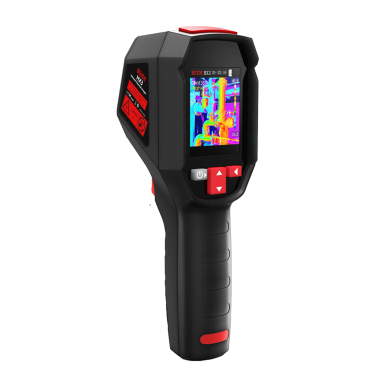
# Ear Thermometers: Accurate and Non-Invasive Temperature Measurement
## Introduction to Ear Thermometers
Ear thermometers, also known as tympanic thermometers, have become a popular choice for measuring body temperature in both clinical and home settings. These devices offer a quick, accurate, and non-invasive way to monitor temperature, making them particularly useful for children and adults alike.
## How Ear Thermometers Work
The Science Behind Ear Temperature Measurement
Ear thermometers use infrared technology to detect the heat emitted by the eardrum and surrounding ear canal. The tympanic membrane shares blood supply with the hypothalamus, the body’s temperature control center, making it an excellent indicator of core body temperature.
When properly positioned in the ear canal, the thermometer captures infrared radiation and converts it into a temperature reading within seconds. Most modern models feature:
- Fast measurement times (1-3 seconds)
- Memory functions for tracking temperature trends
- Backlit displays for easy reading
- Fever alarms for quick identification of elevated temperatures
## Advantages of Ear Thermometers
Why Choose an Ear Thermometer?
Ear thermometers offer several benefits over traditional methods of temperature measurement:
Speed and Convenience
With readings available in seconds, ear thermometers are ideal for restless children or when quick measurements are needed.
Non-Invasive Nature
Unlike rectal thermometers, ear thermometers provide a comfortable experience without compromising accuracy.
Hygienic Operation
Disposable probe covers minimize the risk of cross-contamination between users.
Accuracy
When used correctly, ear thermometers can provide measurements comparable to more invasive methods.
## Proper Usage Techniques
Getting Accurate Readings
To ensure the most accurate results from your ear thermometer:
- Gently pull the ear upward and backward (for adults) or straight back (for children) to straighten the ear canal
- Insert the probe snugly but gently into the ear canal
- Hold the thermometer steady until the measurement is complete
- Use a clean probe cover for each measurement
- Avoid taking measurements immediately after being in extreme temperatures
Note that earwax buildup or ear infections may affect accuracy. In these cases, consider an alternative measurement method.
## Choosing the Right Ear Thermometer
Features to Consider
When selecting an ear thermometer, consider these important factors:
| Feature | Importance |
|---|---|
| Measurement Speed | Faster models (1-2 seconds) are better for children |
| Memory Capacity | Helpful for tracking temperature over time |
| Age Adjustment | Some models adjust readings based on patient age |
| Display Type | Backlit displays improve readability in low light |
Look for models that are clinically validated and approved by relevant health authorities in your region.
## Conclusion
Ear thermometers represent a significant advancement in temperature measurement technology, combining speed, accuracy, and patient comfort. Whether for home use with children or in professional healthcare settings, these devices provide reliable results when used properly. By understanding their operation and following best practices for use, you can confidently monitor body temperature with minimal discomfort and maximum efficiency